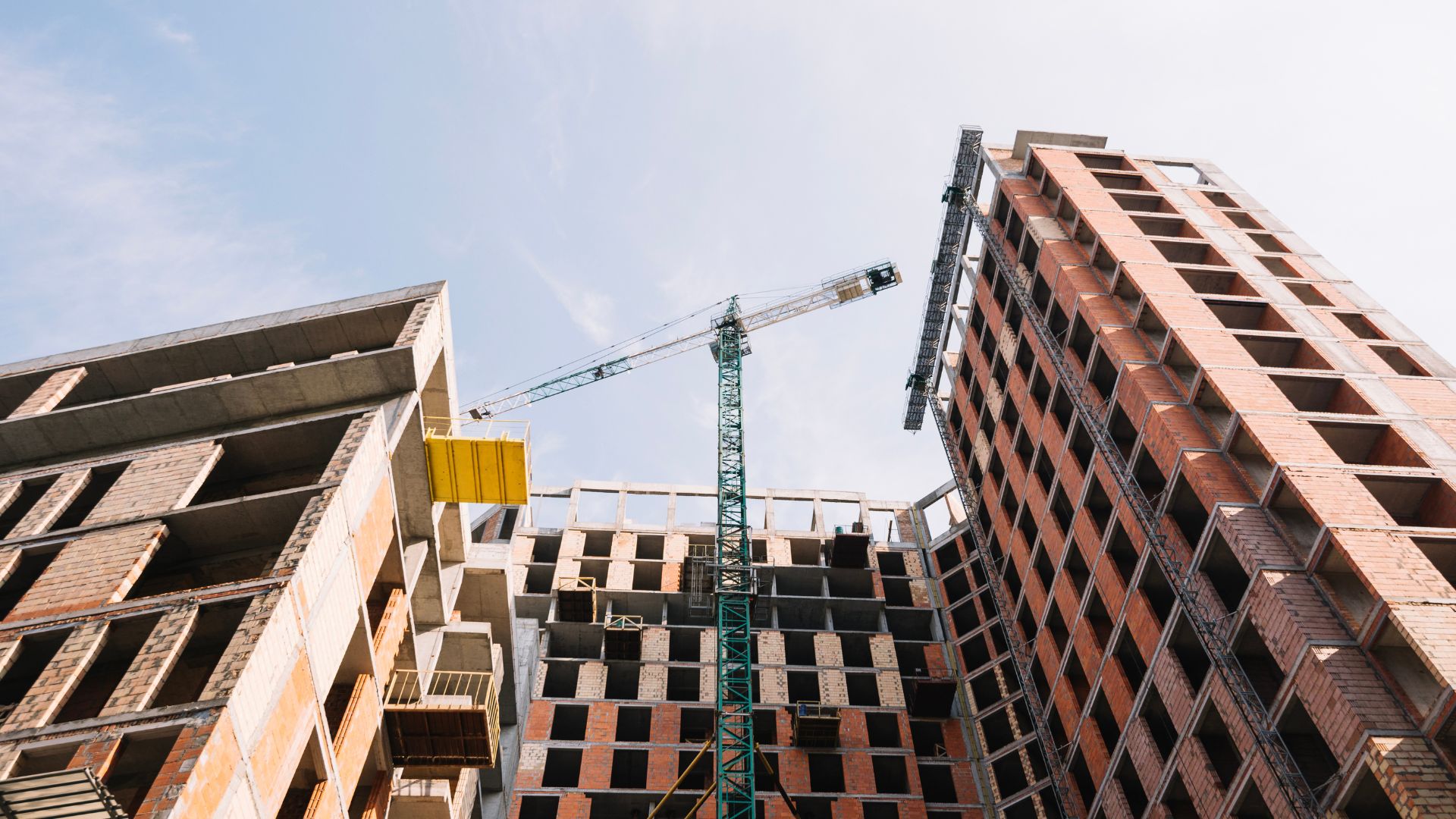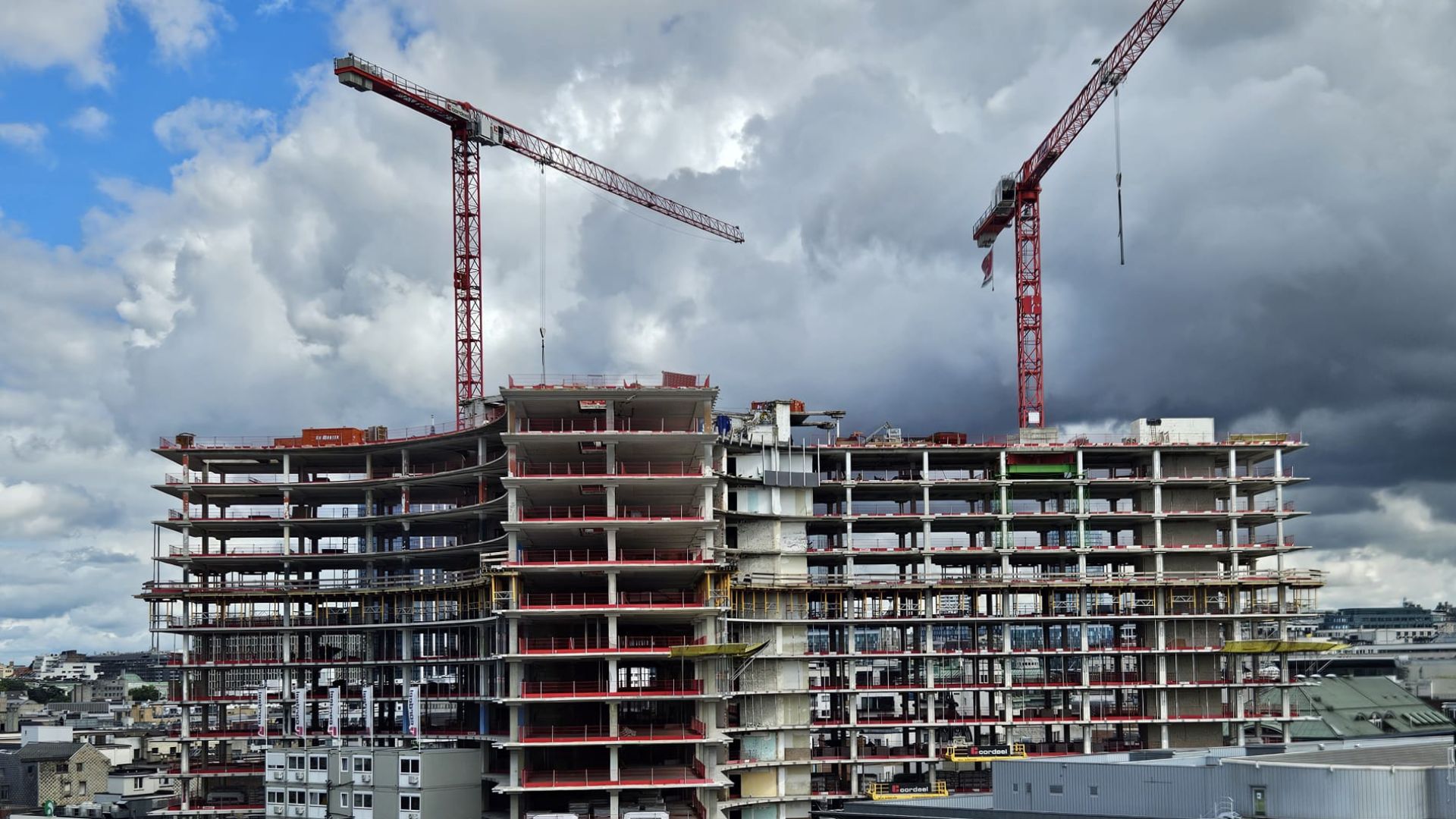Victor Fonseca, Senior Associate, Real Estate at GRESB dives into embodied carbon, what it is, why it matters, and 2024 insights from the GRESB Real Estate Benchmark.
What is embodied carbon?
Embodied carbon refers to the greenhouse gas (GHG) emissions, measured in carbon dioxide equivalents (CO₂e), associated with materials and construction processes throughout a building’s lifecycle.
The built environment generates 42% of annual global GHG emissions, with 27% coming from operations of buildings and 15% coming from building materials and construction processes (i.e., embodied carbon). Embodied carbon emissions are expected to become more representative of the annual global GHG emissions from the real estate sector over time as operational energy efficiency increases and local grid decarbonization drive reductions in operational emissions.
According to Architecture 2030, an independent non-profit organization, the global building stock is expected to grow by 241 billion square meters, from 2020 to 2060, to accommodate the largest wave of urban growth in human history. This is the equivalent of adding an entire New York City to the world every month for 40 years.
Breaking down embodied carbon
These emissions occur throughout different lifecycle stages of a building, as illustrated in the image below.
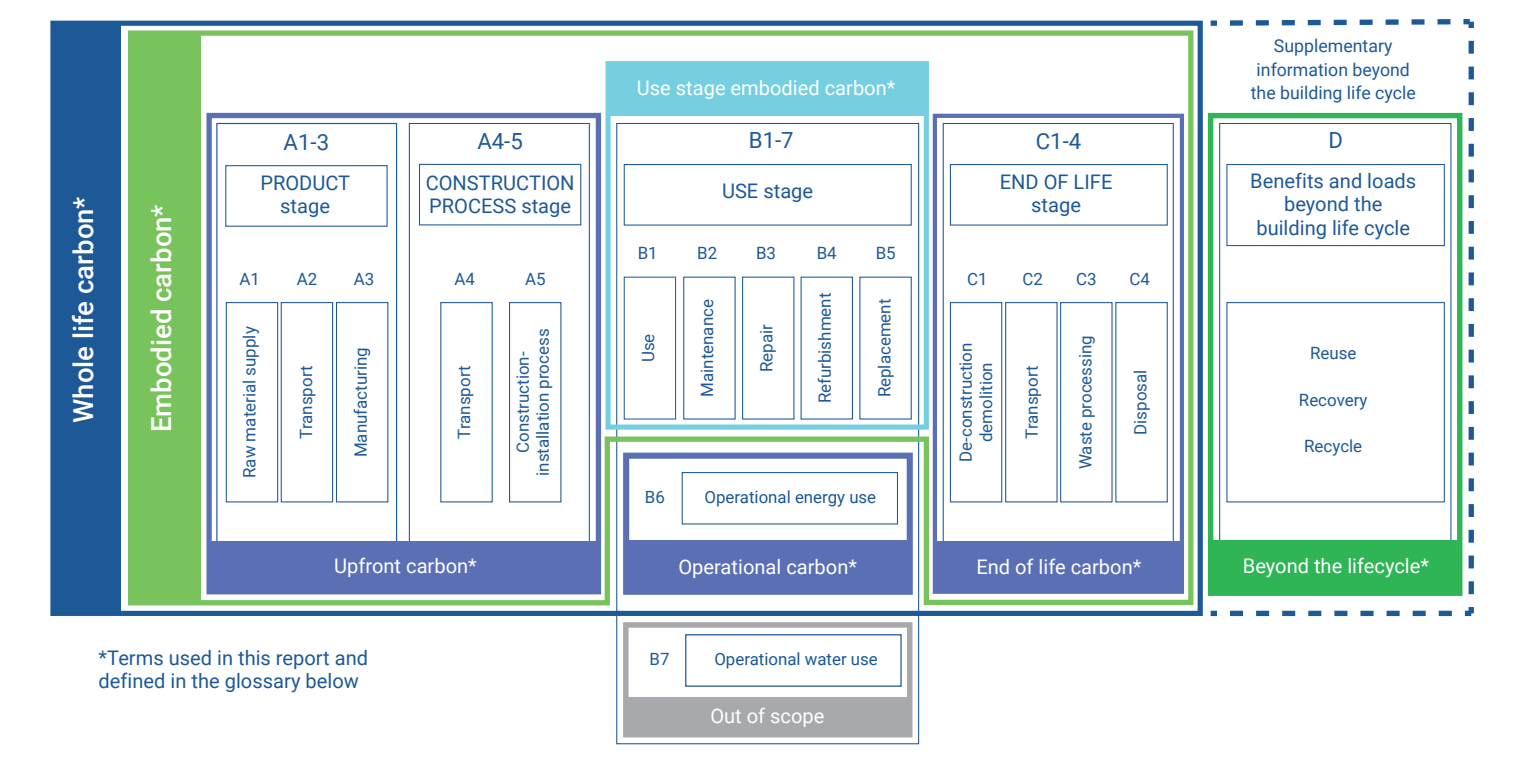
Source: WorldGBC
** Please note that B4, “Refurbishment,” and B5, “Replacement,” have been inverted in the original WGBC publication and in the above image.
The correct stages are: B4, “Replacement,” followed by B5, “Refurbishment.”
Embodied carbon, therefore, includes upfront, use stage (excluding modules B6 and B7), and end-of-life emissions as represented in the image above from the World Green Building Council (WorldGBC) report “Bringing embodied carbon upfront.”
Upfront embodied carbon
Upfront embodied carbon refers to emissions from the construction and/or major renovation of buildings. These emissions are related to materials production (modules A1–A3), transportation to site (A4), and construction-installation processes (A5), and they represent the biggest portion of embodied carbon emissions throughout the whole life cycle of a building.
This subset of embodied carbon emissions is most material for development activities, as upfront carbon is ‘locked-in’ from the moment construction works are completed and cannot be reverted. However, understanding the upfront emissions associated with the usage of the material can guide future decisions in standing investment portfolios – such as whether to renovate or demolish an asset or how to better dispose of building elements. These informed choices can help reduce future downstream embodied carbon emissions (e.g., reusing and recycling materials).
Use-stage and end-of-life embodied carbon
Use-stage and end-of-life embodied carbon are downstream emissions and occur from the practical completion of a building. These emissions are related to materials and processes for maintaining the building during the use-stage and end-of-life treatment of building elements/materials after its use (identified in modules B1–B5 and C1–C4). Modules B6 and B7 are operational emissions and are therefore not considered as downstream embodied carbon emissions.
Downstream embodied carbon is material to both development and standing investment portfolios.
More than construction
In addition, it is important to note that embodied carbon goes beyond construction. Tenants turnover and the resulting embodied carbon emitted in those fit-out works, along with the need to maintain, replace, and repair building materials throughout the entire lifespan of an asset will accumulate over time to be a significant portion of a building’s total carbon footprint. This highlights the need for these emissions to also be included in the agenda of standing investment portfolio managers.
Moreover, buildings usually change ownership throughout their lifespan. This marks the need to establish rules for embodied carbon inheritance and to encourage the inclusion of embodied carbon in the due diligence risk assessment of new acquisitions. To illustrate this, the Institute of Structural Engineers breaks down the embodied carbon footprint of a building throughout different lifecycle stages. Note that not only do different lifecycle modules of embodied carbon apply to development and standing investment portfolios, but also that the magnitude of their impacts can vary significantly.
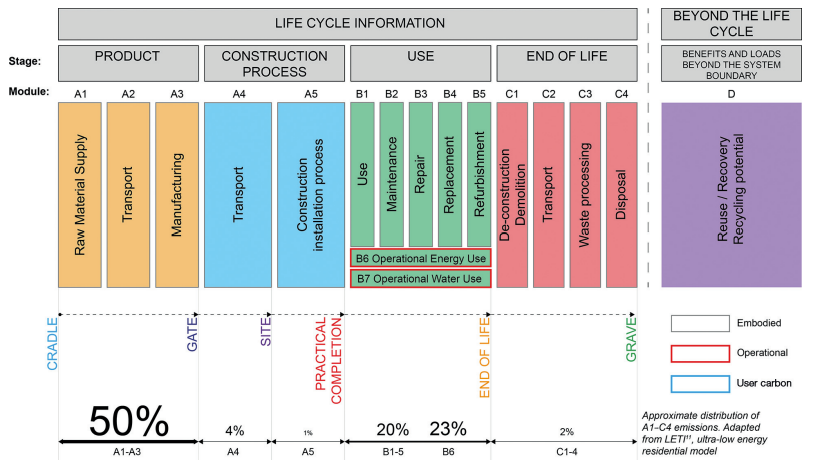
Embodied carbon in the 2024 GRESB Real Estate Assessment and beyond
In 2023, the GRESB Foundation introduced a new indicator to collect the embodied carbon emissions from new construction assets and major renovation projects. Following this addition, GRESB has noted an increase in the reporting rate of embodied carbon emissions year on year, with 31% of participants in the Development Component measuring the embodied carbon emissions of their projects in 2024, up from 24% in 2023. This measurement covers the A1-A5 life cycle stages and all appropriate building layers.
This number can be further broken down to highlight differences in participants’ behavior regarding the measurement of embodied carbon emissions in new construction versus major renovation projects. In 2024, GRESB data shows that 26% of participants in the Development Component have measured the embodied carbon emissions of their new construction projects, up from 20% in 2023. In contrast, only 7% (up slightly from 6% in 2023) of participants have measured the embodied carbon emissions of their major renovation projects. This discrepancy may be due to the greater complexity and variability involved in assessing embodied carbon in renovation projects, where existing materials and structures must be accounted for.
Moreover, embodied carbon measurement practices vary across regions and sectors. GRESB data shows that Europe and Oceania are leading the race among regions, while the Retail and Office sectors demonstrate stronger practices in measuring embodied carbon. It is important to note that these insights are directly influenced by the sample. Nonetheless, all sectors and regions have shown an increase in measuring embodied carbon compared to 2023.
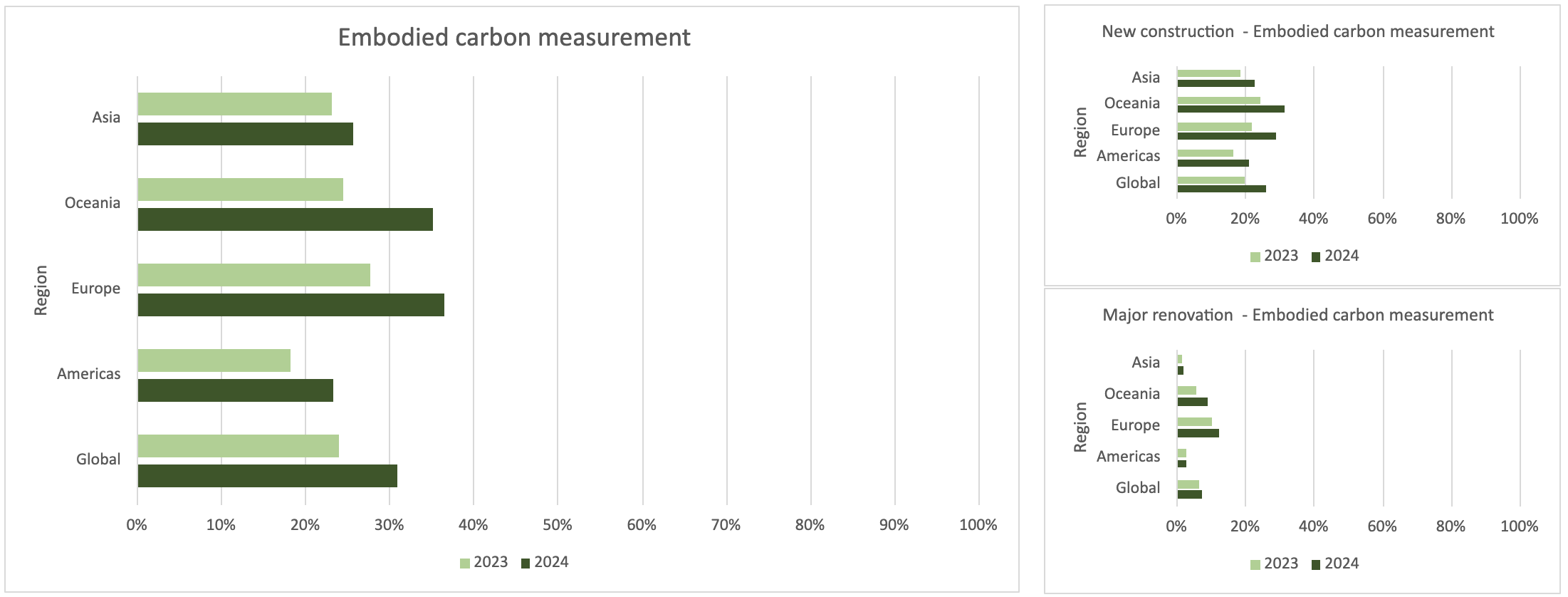
Regional breakdown of embodied carbon

Sectoral breakdown of embodied carbon
This increase not only highlights the growing importance of embodied carbon within the real estate market, but also the need for GRESB to keep elevating this topic so the industry can maximize their impact in mitigating these emissions.
In response to the industry’s rising awareness and focus on embodied carbon, the GRESB Foundation will be further addressing this topic in the Real Estate Standard in 2025 and beyond, introducing a series of new developments aiming to make embodied carbon more prominent in the Standard across all the three components: Management, Performance, and Development. For more details on the changes, access the full document: GRESB Real Estate Standard – 2025 Updates.
Going forward, embodied carbon is expected to remain a high-priority topic for development in the GRESB Standards and, as a result, it is likely to continue to be a key focus area for both the GRESB Foundation and the real estate sector.
Embodied carbon insights
Explore a curated collection of articles and insights from GRESB and our Partners on the critical issue of embodied carbon. These resources provide valuable perspectives on how the industry is addressing this challenge and highlight best practices, innovative solutions, and the latest thought leadership on reducing embodied carbon in the built environment.
For more insights from Victor Fonseca, Senior Associate, Real Estate and Erik Landry, Director, Climate Change, listen to our Pulse episode: “Hidden in plain sight: understanding embodied carbon for real estate.”

